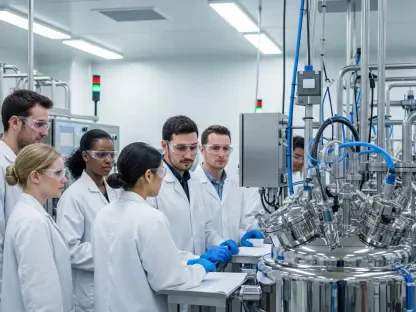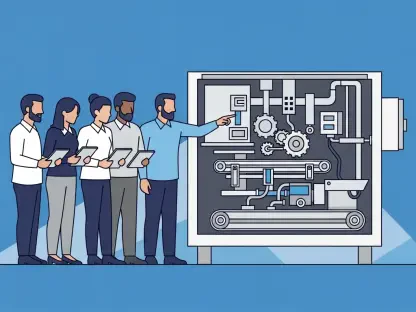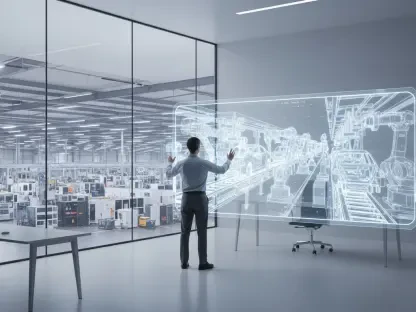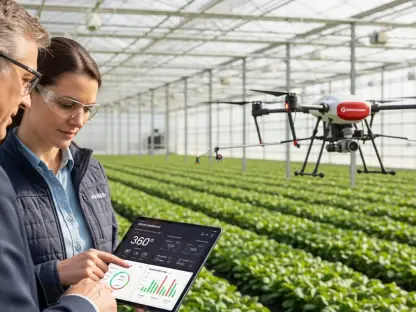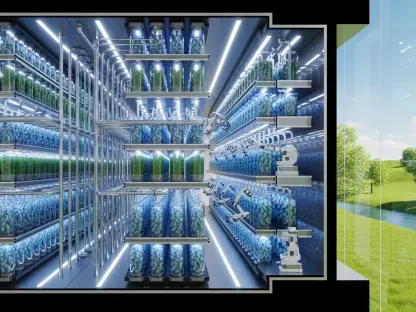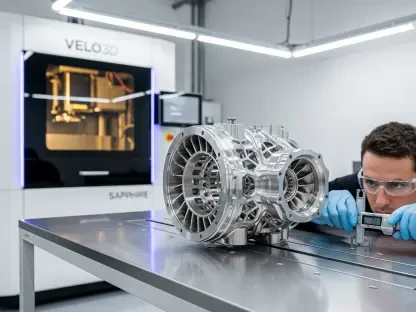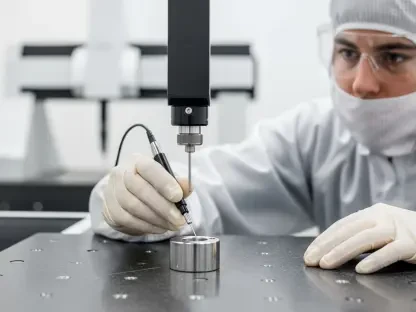The pharmaceutical industry is undergoing a remarkable transformation as it significantly shifts focus towards environmental sustainability. This transformational shift is driven by a combination of regulatory pressures, heightened consumer demands for greener options, and a collective commitment to reducing the industry’s ecological footprint. The much-anticipated PHARMAP 2025 conference set to take place in Berlin is anticipated to be a pivotal moment for industry professionals, presenting an unparalleled opportunity for collaboration and ideation to further sustainable practices.
Industry-Wide Sustainability Goals
The European pharmaceutical sector has set its sights on a remarkably ambitious goal: to cut carbon emissions by 55 percent by the year 2030, in alignment with the far-reaching objectives outlined in the European Green Deal. This target is reflective of a broader, industry-wide movement towards greater sustainability. Notably, this movement is also tailored to address the estimated 300,000 tons of plastic waste generated annually by the pharmaceutical industry. Efforts to achieve these targets include reducing plastic use through the adoption of biodegradable materials and optimizing packaging processes.
Regulatory bodies like the European Commission play a crucial role in steering the industry towards these sustainability goals. Policies such as the “Strategic Approach to Pharmaceuticals in the Environment” mandate the implementation of green solutions at every stage of the pharmaceutical lifecycle. As a result, companies are proactively adopting renewable energy sources, developing low-carbon products, and investing in net-zero buildings—structures designed to produce as much energy as they consume. This ongoing shift underscores that sustainability and quality standards are not mutually exclusive but can, in fact, reinforce one another.
Innovations in Green Manufacturing
Green manufacturing is becoming an increasingly critical focus within the industry, with significant strides being made in this area. Companies such as Novo Nordisk are setting exemplary standards by implementing innovative solutions such as continuous manufacturing and solvent recovery systems. These practices not only significantly reduce waste but also enhance overall energy efficiency, with energy consumption reductions of up to 50 percent.
Novo Nordisk’s strategic investment in Kalundborg, Denmark, stands as a prominent example of how pharmaceutical companies can lead in sustainable manufacturing. The transformation of Kalundborg into a sustainable pharmaceutical manufacturing hub has allowed the company to reduce its environmental footprint significantly. Moreover, this transformation has driven local economic growth and contributed to infrastructural development, illustrating that sustainable initiatives can have far-reaching, positive impacts beyond just environmental benefits.
Eco-Friendly Packaging Solutions
Another notable evolution in the pursuit of sustainability within the pharmaceutical industry is the shift towards eco-friendly packaging solutions. Traditional packaging materials are steadily being replaced with more sustainable alternatives such as biodegradable plastics, recycled cardboard, and plant-based polymers. Moreover, the industry is adopting smart packaging technologies like QR codes and e-leaflets. These innovations serve to minimize excessive paper use while simultaneously enhancing patient engagement and providing easy access to essential information.
Collaboration across the supply chain plays an essential role in embedding these eco-friendly practices. Pharmaceutical companies are increasingly working closely with their suppliers to ensure the sustainable sourcing of raw materials and the optimization of logistics. These partnerships not only help to reduce the overall carbon footprint but also drive cost efficiencies. This underscores a critical insight: profitability and environmental responsibility can be, and increasingly are being, pursued in tandem within the industry.
PHARMAP 2025: A Catalyst for Change
PHARMAP 2025 is poised to serve as a critical catalyst for the widespread adoption of sustainable practices within the pharmaceutical industry. The conference is slated to provide a specialized platform for stakeholders to discuss, share, and innovate green practices. The agenda for the congress includes various sessions and panels dedicated to green manufacturing and packaging solutions, thereby fostering an environment conducive to collaboration and knowledge-sharing.
One particularly significant session at PHARMAP 2025 will be the roundtable discussion on sustainability in manufacturing processes. Experts from leading organizations will gather to deliberate on innovations in green manufacturing, collaborative efforts with suppliers, and the development of reuse and recycling programs. This session promises to be a highlight, equipping attendees with invaluable insights and actionable strategies for advancing sustainability within their operations.
Leadership Panel on Packaging Solutions
Another highly anticipated event at PHARMAP 2025 is the Leadership Panel focusing on innovative packaging solutions. Senior executives from some of the industry’s top companies will convene to explore the latest advances in smart and digital packaging, eco-friendly practices, and the impact of label materials on packaging integrity. The panel will also delve into the significant role of digital transformations in packaging design, ensuring participants are equipped with a comprehensive understanding of the current landscape and future directions.
The Focus Exhibition within PHARMAP 2025 promises an engaging and interactive experience for delegates. Attendees will have the opportunity to engage directly with vendors, explore the latest advancements in biodegradable and recyclable packaging materials, and discover energy-efficient manufacturing equipment, and cutting-edge digital smart packaging solutions. This hands-on experience will help bridge the gap between theory and practice, providing attendees with practical knowledge and strategies that can be implemented within their organizations.
Embracing a Sustainable Future
The pharmaceutical industry is undergoing an extraordinary transformation as it makes a significant shift toward environmental sustainability. This major change is driven by a mix of regulatory pressures, increased consumer demand for eco-friendly options, and a unified commitment to lessening the industry’s environmental impact. A key event highlighting this shift is the much-awaited PHARMAP 2025 conference, scheduled to take place in Berlin. This conference is expected to be a landmark occasion for industry experts, offering a unique platform for collaboration and innovation aimed at advancing sustainable practices. The importance of the conference cannot be overstated, as it will provide a crucial space for professionals to share ideas, develop new strategies, and work together towards a greener future for the pharmaceutical sector. By focusing on sustainable solutions, the industry hopes to not only comply with regulations but also meet the growing expectations of consumers and contribute positively to the global effort to combat environmental issues.


